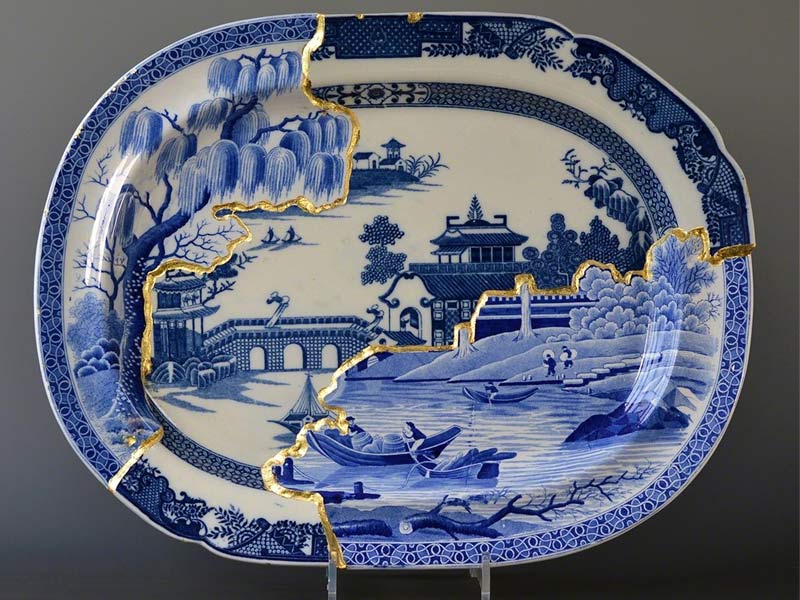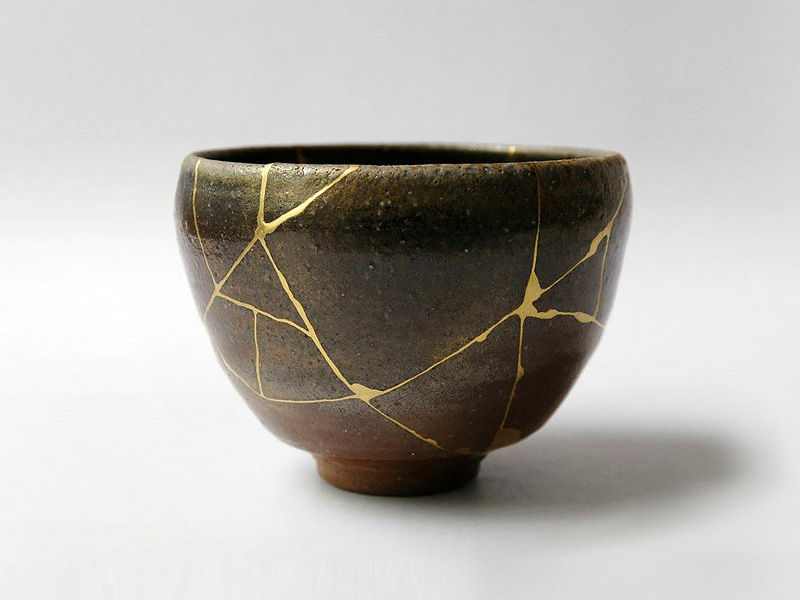When Hemingway wrote about World War 1 in his famous novel, A Farewell to Arms and said, “the world breaks everyone and afterward many are strong in the broken places”, it’s hard to imagine that he may have referred to the ancient Japanese practice of Kintsugi because of the kind of man he was and the region of the world he lived in. But if he did allude to it, he has done it in the most crisp and poignant way as those few brief words perfectly capture the spirit of Kintsugi.

Kintsugi is an ancient Japanese art of fixing broken ceramics and pottery with lacquer resin infused with powdered gold. At the end of the process, the previously broken or cracked object would have been adorned with beautiful veins of gold running through its cracks – not only heightening its value but also improving the aesthetic of it.
Instead of trying to hide the cracks on the ceramic, Kintsugi highlights them as golden scars as if they are a part of its ‘new’ and ‘improved’ design; instead of despairing at the ruin of the pottery, Kintsugi celebrates it as an incentive to improve and make it better. The spirit of Kintsugi lies in honouring the fractures of the ceramic bowl as an essential part of its history rather than deeming them as an end of the bowl’s life.
The origin of the art of Kintsugi is dated to the Muromachi Period in Japan when the then Shogun of Japan, Ashikaga Yoshimitsu, broke his favourite Chinese tea bowl and sent it back to China for repair. The repaired tea bowl, when returned, was merely held together by ugly metal staples. If the sight of his favourite tea bowl broken saddened the Shogun, the sight of this inadequate and ugly repair disgusted him. He asked the Japanese craftsmen to find a more impressive solution and Kintsugi was thus born.

Since then, this form of art has gained more significance in Japan than remaining just a process of mending broken objects. It represents a very important concept in Japanese philosophy – of treating moments of despair and sadness, the breakage of mind and body, as those to learn and grow from instead of going down a pit of wallowing and assuming that the end of life has come. The art-form shows us how instead of trying to repress our mistakes and flaws, we should try to embrace them and improve upon them.
Also Read, The Bushido: Code of the Samurai
This assigning of meaning and significance to things is not uncommon in Japanese culture. Fireflies, for instance, represent the way a person should appreciate their transience in the world; water represents the patience one must have while trekking through life and how, with patience and persistence, one can achieve anything just like water can wear down a stone. Kintsugi, in a similar way, is a metaphor to understand the process of healing. It asks you to rewire your brain and frame your hardships in such a way as to remind yourself that you are not a victim of your circumstances; it teaches us to instead embrace our circumstances and enables us to come out of them as a stronger person.

Kintsugi as an art-form gives us an insight into the Japanese aesthetic along with the aesthetic of the eastern part of the world. While the western aesthetic focuses on perfecting the symmetry of its shapes and designs, eastern aesthetic openly welcomes imperfection. This embrace of imperfection is elucidated in the Zen Buddhist idea ‘Wabi Sabi’, another Japanese philosophical concept, that is centered on the acceptance of transience or impermanence and imperfection.
It asks us to appreciate the beauty because of its impermanence rather than despairing over its eventual loss. It also asks us to find beauty in the imperfect. Instead of focusing on symmetry and perfection, it asks us to accept the beauty of damaged designs curated with our own embellishments.
It seems that Hemingway, either mistakenly or otherwise, tapped into this poignant concept of Kintsugi through his musings of all the wreckage of the war and tried to find comfort in the imperfections of the human spirit.

It seems that he understood that one must not attempt to disguise the cracks in themselves and instead try to find inspiration, motivation and comfort in the chance created by a wreckage; to continuously strive to better oneself and one’s surroundings.





























